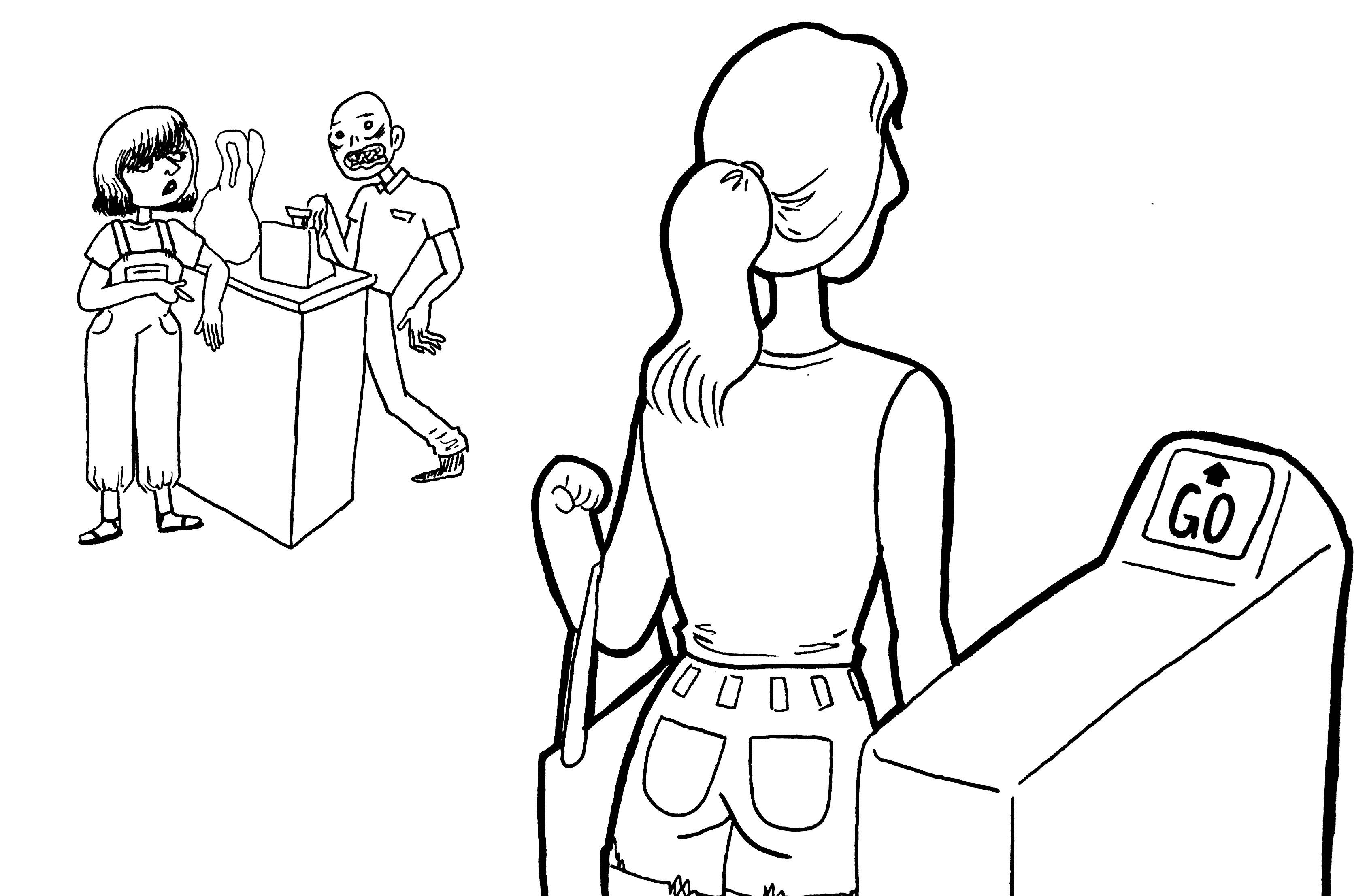OPINION: USC must keep up with new technology
Last week, Amazon opened its long-awaited convenience store, Amazon Go, to the public. Located in downtown Seattle, the store employs Amazon’s groundbreaking “Just Walk Out” technology that enables an unexpectedly efficient customer shopping experience, with none of the hassles of the traditional supermarket — that is, no cashiers, no shopping carts and, most notably, no checkout lines.
Shoppers with the store’s mobile app simply walk into Amazon Go and scan their smartphones on a subway station-like turnstile. Once inside, hundreds of boxy black ceiling cameras track shoppers’ movements. Many items have camera-friendly codes to help the cameras understand which items have been picked up or put back down, and the computers augment that information with data from weight sensors installed in the shelves in a powerful combination of computer vision and machine-learning algorithms. When shoppers are done, they simply walk back out through the same gates they entered, without pausing to wait in line or pull out a credit card. Customers’ Amazon accounts automatically update with a receipt for what they took out the door, along with a “trip timer” telling them how many seconds they spent on the shopping trip.
This futuristic grab-and-go technology, which spent over a year in beta testing, signals the advent of an entirely new customer shopping experience. Quite simply, Amazon Go is the future of consumer shopping, and USC needs to stay on the cutting edge by adopting a similar concept on campus that would greatly benefit its students. While implementing Amazon’s exact “Just Walk Out” technology may be fraught with a variety of issues surrounding pricing, the opening of Amazon Go should serve as a wake-up call for how the University can streamline its own inefficient and time-consuming checkout processes across campus.
With the “Just Walk Out” technology, there would be no more waiting in long lines at the bookstore, Target or Trader Joe’s. Even the lines at Seeds, Starbucks and other popular on-campus spots that combine grab-and-go models with customized on-the-spot purchases could be alleviated. Furthermore, with the installation of more advanced camera systems, shoplifting would also be heavily reduced.
Of course, some may argue that while this all sounds high-tech and trendy, what will it cost? After all, the technology relies on sophisticated data-gathering to transform the shopping experience, and many are worried about violations of privacy. However, many are already giving up a sizable amount of data every day, whether they realize it or not. We live in an age where millennials and members of Generation Z are using facial recognition to sign into their iPhones, where websites tailor their marketing based on our personal search histories and where many of the apps on our phones have geo-trackers. In fact, the data collected by Amazon Go is no more than what most people give away at their traditional supermarkets by using their credit cards.
The second main outcry against this avant-garde technology is that it would displace cashier jobs due to automation. At USC, the main concern would be for students holding on-campus jobs at places potentially affected by the model, such as the bookstore. While this model may eliminate some manual, repetitive work, it would not entirely eliminate the need for human jobs, and would simply change the role of employees. Amazon itself says that at Amazon Go, employees will work on different tasks that require human skill, including helping guide shoppers to the right items, checking drivers’ licenses for alcohol sales or stocking shelves and preparing meal kits.
Perhaps the University doesn’t need to install technology exactly like “Just Walk Out” in order to streamline its checkout processes. For example, there are many ways USC could optimize the check-in process at campus dining halls. Instead of forming long lines at the peak lunch hour and individually handing our USCards to one attendee, perhaps we could move to an Amazon-esque model where we simply walk in and scan our IDs, and the visit is automatically recorded to our USC accounts.
If we could perfect this concept, then other powerful applications at USC could follow, including tracking class attendance and distributing game-day gear during the busiest weekends of football season, where thousands of people flock to the USC Bookstore at the same time.
Ultimately, while the full Amazon Go experience isn’t expected to expand elsewhere any time soon due to its financial and computing-intensive nature, the store’s opening does prompt the important question: How can our current systems be better? While Amazon Go may be seen as trendy but impractical for now, it is the future, and should get us all thinking about how we can revolutionize practices we take for granted in our daily lives — things as simple as the way we shop at the grocery store.


Hold your horses. I know you millennials don’t know the concept of patience, but it will eventually come. This Amazon Go has only been around for about a week, sheesh. Instant gratification mentality!